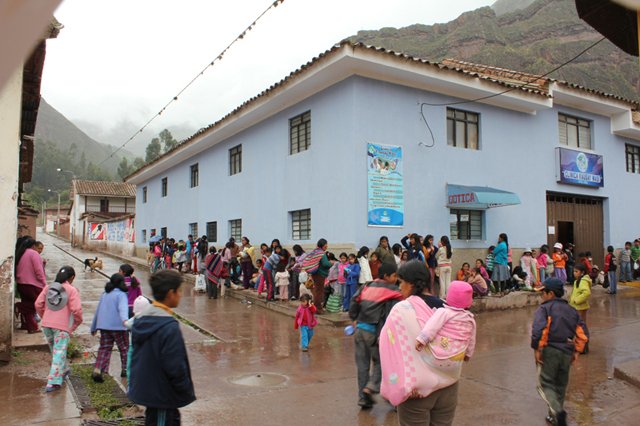COMBATING INTERNATIONAL HEALTHCARE DISPARITIES

 BY AUSTIN WAHLE – Cusco is a city in Peru towering a staggering 11,000 feet above sea level deep in the Peruvian Andes mountains. With vibrant culture, a llama around every turn, and mountains as far as the eye can see, there is much to see and much to absorb on a trip to the ancient capital of the Incan Empire. One aspect of life in Peru that becomes obvious the moment you land on the runway is the sheer disparity between life in Cusco compared to the life most of us live. The farther you move from the central tourist-hub of the city, the more pronounced these differences become. These differences can largely be reflected in the quality of health of the native people.
BY AUSTIN WAHLE – Cusco is a city in Peru towering a staggering 11,000 feet above sea level deep in the Peruvian Andes mountains. With vibrant culture, a llama around every turn, and mountains as far as the eye can see, there is much to see and much to absorb on a trip to the ancient capital of the Incan Empire. One aspect of life in Peru that becomes obvious the moment you land on the runway is the sheer disparity between life in Cusco compared to the life most of us live. The farther you move from the central tourist-hub of the city, the more pronounced these differences become. These differences can largely be reflected in the quality of health of the native people.
In the more remote mountainous regions of Cusco, there is no electricity or power to provide light or heat for houses. Cusco is known for its relatively comfortable temperate climate, but Cusco is also known for periods spanning months where it rains every day. The locals cannot leave their harvested crops and livestock out in the rain or else they would risk a diminished annual profit, so they bring them into the warmest place in the house… the kitchen. This creates a host of potential health complications. In addition to this increased risk of disease, these regions of Cusco do not have any health institutions to aid people who get sick or to give annual health checkups. These areas instead rely heavily on mobile clinics that will travel hours deeper into the Andes on mountainside roads to bring healthcare to even the most remote of villages.
One such mobile clinic group is MEDLIFE (Medicine, Education, and Development for Low Income Families Everywhere), which has local chapters set up at countless universities across the nation, including here at the University of Georgia. MEDLIFE offers volunteers an opportunity to see the differences in healthcare across the world by allowing them to shadow local physicians, dentists, and pharmacists as they help to treat the local people. Volunteers help to complete developmental projects, take vitals on patients, distribute medications, break down and set up clinics, escort patients, and much more. The volunteers are vital to the efficient functioning of both the clinics and the developmental projects, where they are put to work building and painting structures, utilities, and more. MEDLIFE also sends groups to Lima Peru, Tanzania, Ecuador, and Nicaragua.
The opportunity to shadow these physicians does far more than instruct you on medical practices and facts. Instead, you find yourself taking in the culture as much as you are taking in the medicine. Seeing the differences in the provision of healthcare around the globe can open your eyes to the harsh reality of healthcare, that some seem to get a surplus while some get none at all. Organizations like MEDLIFE and their newly inspired volunteers continue to strive to diminish the disparity in medicine, one mobile clinic at a time.
